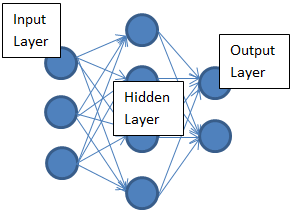How would a professional horse racing gambler make their selections? The answer lies in applying their experience of what factors indicate the expected performance of each horse relative to the competition.
To see what factors influence the result of a race it is helpful to begin by looking at a simple hypothetical example: a two horse race between Hermes and Mercury.
We start by checking the previous form of the horses in the race. Clearly if Hermes has won all his previously races and Mercury none we would favour Hermes , however, we also need to take into account the class of these previous races e.g. Hermes might have picked up his wins in poor quality races whereas Mercury has come in second place in highly contested races. In this way we can deduce 3 factors we need to consider – no. wins, no places and class of previous races.
The task is now to see how these 3 factors combine to help us find a pattern. To do this we will train an artificial neural network (ANN) with training data - a large number of comparable results. The training data includes the 3 factors for past results as Inputs and the result as the Output we want from the ANN. The ANN attempts to learn a pattern mapping the inputs to the output. For the predictions on RacingOracle.com we use a numerical value for this output where 0 would be last placed and 100 the winner.
The benefit of using an artificial neural network is in handling the inherent fuzziness of the data. Our training data is bound to include some results where a horse wins a race with 0 previous wins, 0 places and a poor class of previous races. The ANN is able handle these outlier results and distinguishes the signal from the noise.
We consulted with domain expoerts, including a former on-course bookmaker, and selected over 15 statistics. We process and combine these in different ways to find a pattern capable of making predictions on future races. We are continually testing out new combinations of statistics and new ways to process the results.







